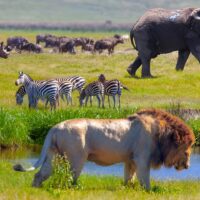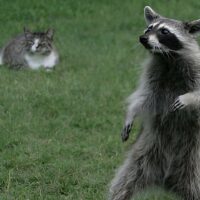Is chocolate a treat for bears as it is for humans? The answer isn’t as sweet as you might think.
Chocolate, known for its rich taste and indulgence among people, isn’t a suitable snack for our furry forest friends. Understanding why involves a closer look at a bear’s dietary needs and the effects of chocolate on their health. Bears captivate us with their might and majesty, but when it comes to their diet, what’s safe and what’s not?
Many pet owners know chocolate is a no-go for dogs, but does the same apply to wild bears? This seemingly innocent human pleasure hides dangers that can be severe for animals. This post delves into the crucial facts about bears and chocolate consumption. We’ll explore their natural diet, the impact of chocolate on a bear’s body, and why it’s vital to keep human treats away from wildlife. Reading on could mean the difference between a healthy bear and a harmful encounter with this human confection.

Credit: www.cnn.com
The Truth About Bears And Chocolate
Many people wonder can bears eat chocolate? The answer is not simple. Bears love sweets. But chocolate is bad for them. It contains theobromine. This is toxic to bears. Even a small amount can be harmful.
Studies show chocolate causes health problems in bears. It can lead to heart issues, seizures, and sometimes, death. So, it’s clear. Keep chocolate away from bears. Their health is at risk.

Credit: www.telegraph.co.uk
Risks Of Feeding Chocolate To Bears
Chocolate holds dangerous elements for bears. The main toxin, theobromine, is like caffeine. Bears cannot handle it well. This makes chocolate a risky food for them.
Eating chocolate can harm bears. It may cause heart issues, seizures, or even death. Small amounts are harmful too. Bears eating chocolate is a serious health issue. They need a safe diet, free from human treats.
| Ingredient | Risk |
|---|---|
| Theobromine | High |
| Caffeine | Moderate |
| Sugar | Low |
Debunking Common Wildlife Myths
Many people think bears can eat chocolate. This is not true. Chocolate is bad for bears. Just like for dogs. People hear stories and start to believe them. This is how myths spread. Friends tell friends. Stories get on the internet. Soon, many believe these myths. But facts are important. We need to share true information. This helps keep bears safe. And it helps us understand wildlife better. Remember, not everything we hear is true. Always check the facts.
Promoting Safe Wildlife Interactions
Teaching people about wild bears is key. Never feed bears chocolate. It can harm them. We must respect wildlife and keep them safe. Share facts, not food, with bears.
Spread the word on how to act near bears. Tell friends and family. Use signs and flyers. Education helps protect both people and bears.
| Do | Don’t |
|---|---|
| Stay calm around bears | Approach wild bears |
| Keep a safe distance | Feed bears any human food |
| Secure your food items | Leave trash out |

Credit: interbears.com
Conclusion
To sum up, bears and chocolate are a risky mix. Feeding chocolate to bears can be harmful. This sweet treat contains theobromine, which is toxic to them. Always keep chocolate away from bears. Remember, their health matters. Stick to natural, bear-friendly foods.
Let’s protect our wildlife and keep their diets safe. Share this knowledge and help keep bears healthy. Your actions can make a difference. Keep chocolate for humans, not bears.








